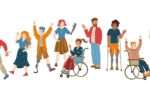Some Thoughts on Sight Translation
by Ousia Whitaker-DeVault

At times, interpreters in the field may be asked to use sight translation, the method of orally reproducing a written text in a target language. This method bridges translation and interpretation, and is now considered to be its own mode of interpreting. Legal interpreters are generally expected to work in all three modes (simultaneous, consecutive, and sight translation), and medical interpreters are expected to work using both consecutive and sight translation.
Since sight translation is “two-toned,” that is, requiring both reading and speech, it comes with its own unique challenges, thus requiring somewhat different skills than traditional simultaneous or consecutive interpreting, or written translation. Often, texts to be sight translated are handwritten, which can make them difficult to read. It is a good idea to be prepared for unfamiliar penmanship, and to take the time to decipher unclear writing.
Sight translation requires quick and accurate reading comprehension, so another way to prepare to do this task is by reading a wide variety of literature and other written texts regularly. In addition to reading practice, some online resources provide exercises to increase reading comprehension. An interpreter who is able to read a text quickly and absorb its meaning will be able to provide a better sight translation.
Remember, when interpreting in any mode, that the provider should be present at all times. For example, it would be inappropriate for a nurse to ask an interpreter to sight translate a document while they left the room to do something else. When the provider leaves the room, the interpreter must follow.
Using sight translation for long documents can take a long time, and fatigue the interpreter, leading to error. Because of this, its use should be limited. Some documents, such as materials routinely provided in English, and vital documents, including legal consent forms, may not be appropriate for sight translation by an interpreter without legal certification. They should instead be translated professionally. With questions about when to use sight translation, please contact your SWITS representative.






